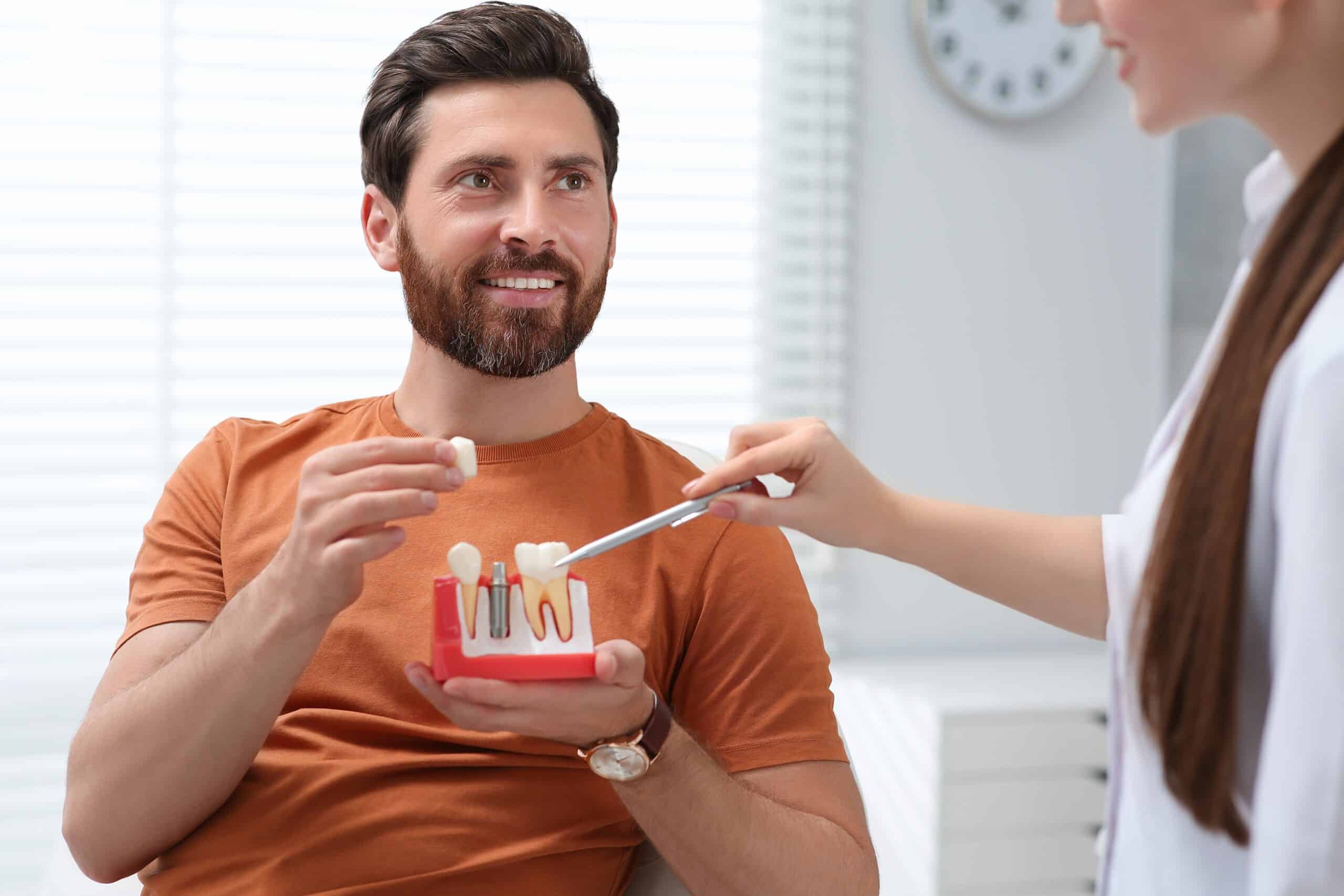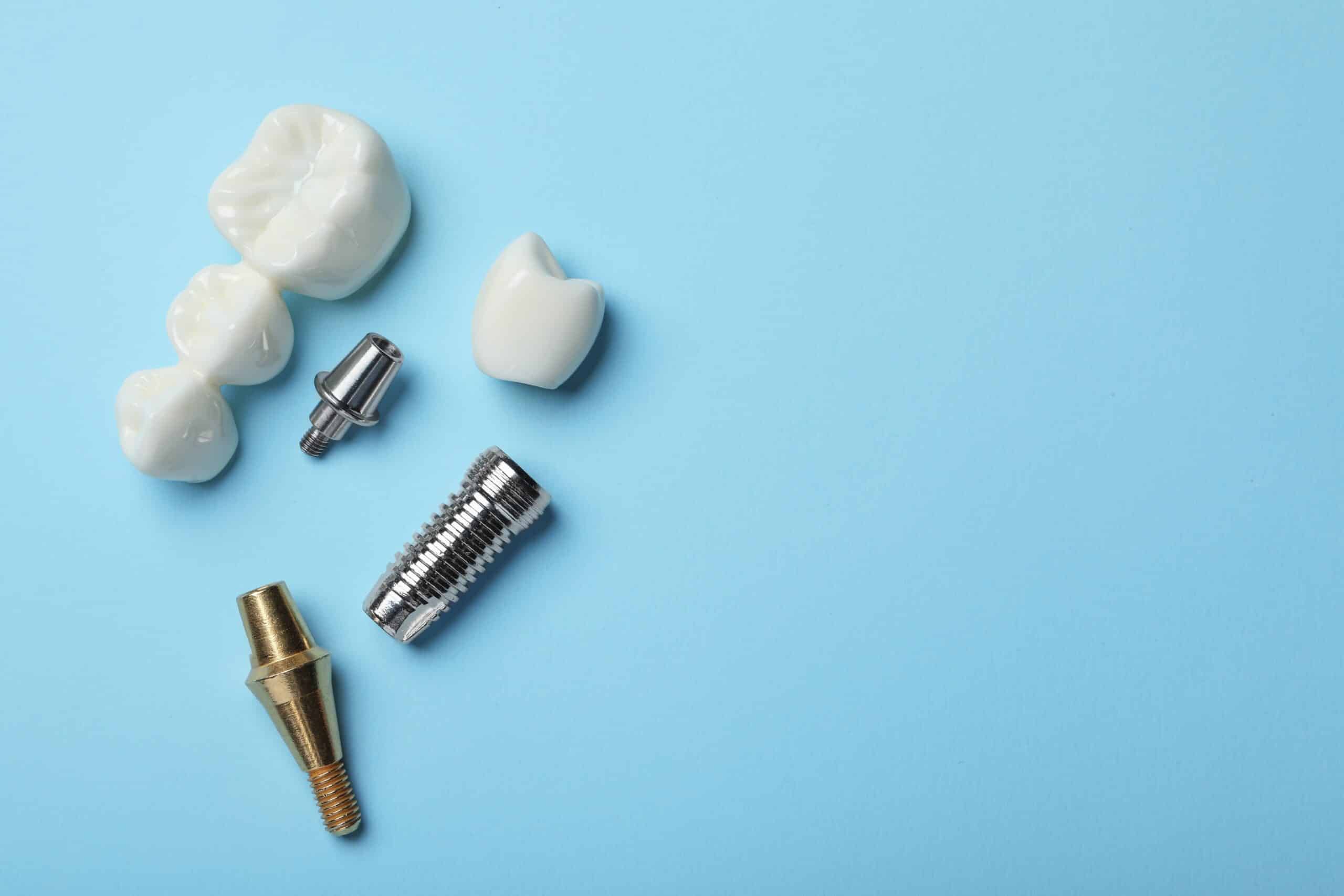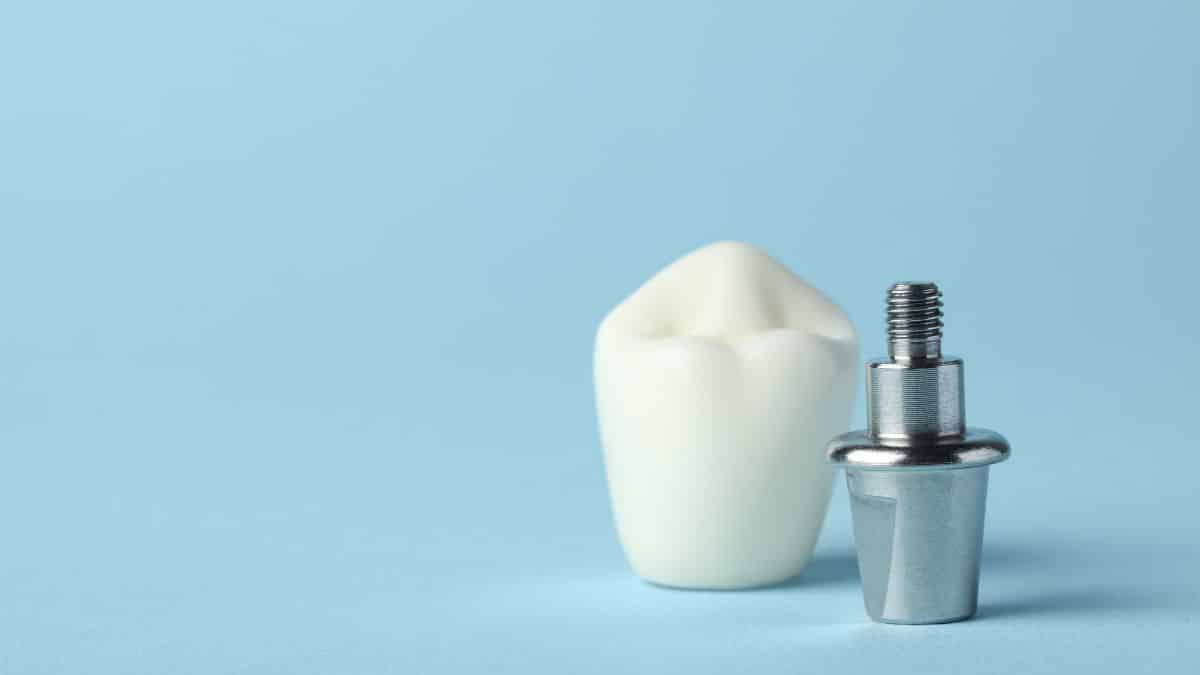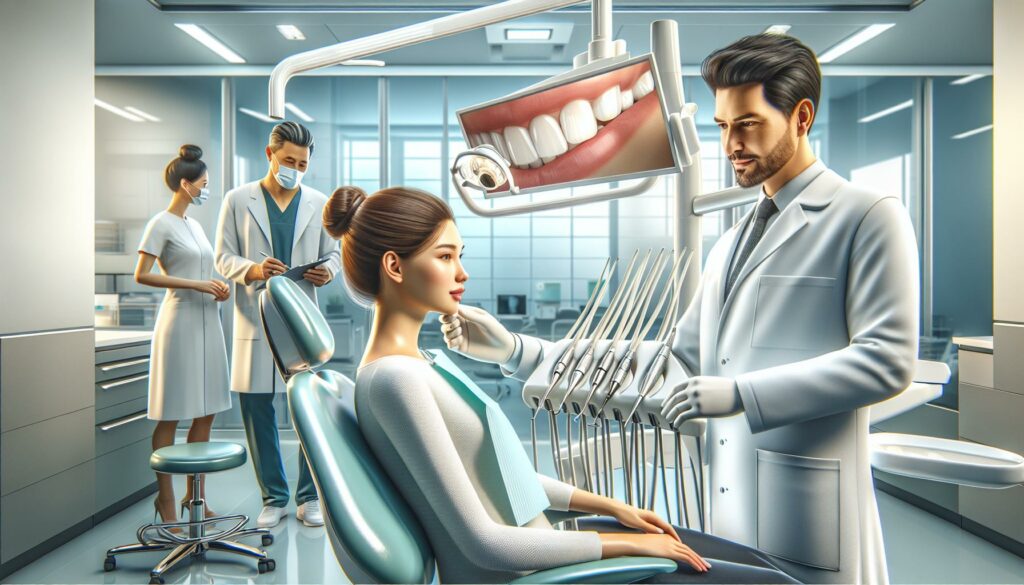Let’s talk dental health, specifically about crown removal. Many folks worry about the potential pain associated with this procedure. Is it painful to remove a crown? The short answer is: typically, no.
Now, don’t get me wrong – I’m not saying you won’t feel a thing. What I am stating is that any discomfort during the process can usually be managed effectively with local anesthesia and proper care by your dentist or endodontist.
The truth of the matter is that removing an old or damaged crown involves minimal invasiveness compared to other dental procedures like root canals or extractions. So breathe easy! Your journey towards better oral health shouldn’t have you wincing in anticipatory pain.
Understanding Dental Crown Removal
Dental crowns serve a crucial role in the world of dentistry. They’re essentially tooth-shaped “caps” that are placed over teeth—encasing the entire visible portion of a tooth to restore its shape, size, strength and appearance. Now you might be wondering, what happens when these dental saviors need to be removed? Is it going to hurt?
Let’s cut straight to the chase—it’s not as terrifying as it may sound. The process typically involves your dentist numbing up your tooth with local anesthesia so you won’t feel anything during removal. Afterward, they’ll use special tools designed for crown removal without causing unnecessary damage.
Here are some reasons why crowns might need removing:
- It has become loose or dislodged
- Decay under the crown
- Replacement due to wear and tear
Now onto that pressing question—does it hurt? In most cases, no! The majority of patients report little discomfort during this procedure because local anesthesia is used before starting any work.
It’s important though not to let fear deter you from necessary dental care! Just like regular cleanings and checkups, sometimes removing an old or damaged crown is essential for maintaining good oral health.
Remember too: everyone experiences pain differently. What one person considers minor discomfort could be more intense for someone else—and vice versa! So don’t stress if you’re feeling nervous; communication with your dentist can go a long way towards making sure everything goes smoothly.
So there we have it – understanding dental crown removal doesn’t have any scary secrets lurking beneath its surface (pun intended!). With knowledge on our side and open communication with our healthcare professionals – we’ve got this handled!
Reasons for Removing a Dental Crown

Sometimes, it’s necessary to remove a dental crown. There are several reasons why this might be the case, and I’m going to delve into some of these scenarios.
One common reason is tooth decay under the crown. Despite the protective cover provided by crowns, bacteria can still infiltrate underneath if there’s even a tiny gap between the crown and your natural tooth. Over time, these sneaky intruders can lead to cavities that require attention.
Another cause could be damage or wear on the crown itself. Crowns aren’t invincible; they’re subject to wear and tear just like our natural teeth. Grinding your teeth at night? That can chip or crack your crowns over time! Accidents also happen: biting down on something hard accidentally might leave you with a damaged crown in need of replacement.
Fit issues may also necessitate removal of dental crowns. An ill-fitting dental appliance is nobody’s idea of fun – it can cause discomfort when chewing or speaking and even contribute to oral health problems down the line.
Finally, let’s not forget aesthetics – perhaps you’re unhappy with how your crowned tooth looks now that it doesn’t match its neighboring pearly whites anymore!
So there we have it – while removing a dental crown isn’t something done lightly due its invasive nature (and potential pain!), sometimes circumstances demand exactly that action for preserving optimal oral health.
The Procedure of Dental Crown Removal
I’m sure we’ve all had that nagging question at the back of our minds – is it painful to remove a dental crown? I’ll try to provide some clarity on this, so let’s dive right into it.
The first step in the process is numbing. Your dentist will use a local anesthetic to numb your tooth and surrounding gums, ensuring you don’t feel any pain during the procedure. Now remember, while you might experience slight discomfort when getting the shot (just like any other injection), it’s this very step that ensures a pain-free removal process.
Once everything’s comfortably numb, your dentist will start loosening up your crown. They’ll use special dental tools for this – usually a tool known as ‘crown remover’. It may sound daunting but rest assured these professionals know what they’re doing! This part of the procedure typically doesn’t cause any physical discomfort or pain thanks to our friend Mr Anesthesia from earlier!
Next comes actually removing the crown from your tooth. If it was properly loosened beforehand, this should be pretty straightforward with minimal effort required on part of both you and your dentist.
Now keep in mind folks – these are general steps that most dentists follow during crown removal procedures. However depending upon individual cases there can be variations; after all every mouth has its own unique story!
What about aftercare? You might ask – well once again things can vary based on individual circumstances but generally speaking:
- Rinse with warm salt water
- Avoid hard or sticky foods
- Take over-the-counter pain relievers if needed
These simple measures should help ensure smooth sailing post-procedure!
So there we have it – no need for nightmarish visions next time someone mentions “dental crowns”. As long as there’s adequate preparation and anesthesia involved (and trust me there usually is) then I’d say chances are high you won’t be feeling any significant pain during the process!
Is Removing a Dental Crown Painful?

I’m often asked, “Is removing a dental crown painful?” Well, let’s dive into that topic. If you’re like most people, the thought of having any type of dental work done can cause some level of anxiety. You’ll be glad to know though that typically, it’s not as bad as you might think.
Dentists use local anesthesia when removing a crown. This means they’ll numb the area around your tooth so you shouldn’t feel any pain during the procedure itself. But I must say – while the actual process isn’t usually painful due to this numbing effect, there may be some discomfort or sensitivity afterward once the anesthetic wears off.
Some folks might experience mild soreness in their gums or jaw for a few days post-procedure because their mouth was open for an extended period during treatment. It could also happen if there was infection under the old crown and your dentist had to do more extensive work than just replacing it with another one.
Let me share something interesting – according to several studies:
- 95% patients reported no pain during their dental procedures when local anesthesia is used
- Around 5% experienced mild discomfort after certain treatments
So don’t let fear hold you back from maintaining good oral health! Remember though everyone’s tolerance level varies and what feels slightly uncomfortable for one person could potentially feel quite different for another.
In case such situations arise where severe pain persists after getting your crown removed; don’t hesitate at all – reach out immediately to your dentist or healthcare provider who will provide further guidance on managing these symptoms effectively!
Pain Management Techniques During the Process
It’s natural to feel a bit apprehensive when thinking about having your dental crown removed. However, it’s essential to understand that dentists employ several effective pain management techniques during the process.
Firstly, local anesthesia is typically used before removing a crown. This numbs the area around your tooth and gums, preventing any discomfort or pain during the procedure. You might still feel some pressure but rest assured that this isn’t painful.
Secondly, sedation options are also available for those who experience significant anxiety or fear related to dental procedures. There are different levels of sedation from mild (conscious) sedation where you’re awake but relaxed, up to general anesthesia which will make you completely unconscious for the duration of your treatment.
In addition:
- Over-the-counter pain relievers may be recommended by your dentist post-procedure if needed.
- Ice packs can be applied at home afterward on/off every 15 minutes for an hour or so to reduce inflammation.
- Gentle saltwater rinses can soothe irritated gum tissue following removal of a crown.
Remember though – everyone’s experience with pain is subjective and varies greatly! What one person perceives as merely uncomfortable might be quite painful for another individual. Your dentist should discuss all potential sensations prior to starting any treatment along with measures in place aimed at minimizing discomfort and promoting relaxation throughout each step in removing your dental crown.
Post-Removal Care and Precautions

After your crown has been removed, it’s crucial to follow the post-procedure care instructions from your dentist. This will not only speed up the healing process but also minimize any discomfort or pain you might experience.
Firstly, let’s talk about oral hygiene. Even though you might feel a bit of sensitivity in the area where the crown was removed, don’t let this deter you from maintaining good oral health habits. Brushing twice a day with fluoride toothpaste and flossing daily is more important than ever now.
Next on our list are dietary precautions. Until your mouth fully heals, try avoiding hard or sticky foods that could potentially cause damage to the treated area or lead to infection if pieces get stuck there.
Here are some general tips:
- Opt for soft foods like mashed potatoes and yogurt
- Avoid extreme temperatures – both hot and cold
- Skip out on sugary drinks which can aggravate sensitive teeth
It’s also important to keep an eye out for any signs of infection such as persistent pain or swelling after several days post-procedure – these symptoms should not be ignored! If they occur, contact your dentist immediately.
Lastly, make sure you’re attending all necessary follow-up appointments so that your dental professional can monitor how well everything is healing up. It’s their job to ensure there aren’t complications following a procedure like this one!
Taking these precautions seriously will go a long way in ensuring smooth sailing during recovery after having a crown removed.
When to Consult Your Dentist After the Procedure
I’ve got some insights I’d love to share with you about when it’s appropriate to seek out your dentist after having a crown removed. Keep in mind, every situation is unique and this advice isn’t meant as an absolute rulebook. It’s more like a roadmap.
One instance where you’ll definitely want to ring up your dentist is if the pain from the procedure doesn’t subside after a few days or gets worse over time. This could be an indication of infection or other complications that need immediate attention.
Another signpost on our roadmap would be sensitivity issues – specifically, if hot and cold sensations are causing discomfort around your tooth area post-procedure. That’s not something you should ignore! Give your dentist a call straight away.
- Pain persisting beyond normal healing period
- Increased sensitivity especially towards temperature changes
And let’s not forget about bleeding! A little bit of blood immediately following removal isn’t unusual, but continuous bleeding for hours afterward? Yeah…that’s not part of the plan! If this happens, get on that phone pronto!
Lastly, if there are any changes in bite or alignment that weren’t present before – well then my friend, it’s high time for another visit!
Remember folks: these signs aren’t just minor nuisances; they’re red flags alerting us something might be amiss:
- Persistent bleeding
- Changes in bite/alignment
Please don’t brush them off (pun intended!). At any hint of trouble post-crown removal process – reach out to your dental professional without delay.
Conclusion: Debunking Myths About Dental Crowns
Wrapping things up, let’s put some popular misconceptions about dental crowns to bed. It’s often assumed that removing a dental crown is excruciatingly painful – but this is far from the truth. Yes, there may be discomfort during the procedure, but it shouldn’t be excessively painful.
First off, your dentist will typically use local anesthesia to numb the area around your tooth before proceeding with removal. This ensures you won’t feel any sharp pain during extraction.
Secondly, post-procedure sensitivity or discomfort can happen but it should subside within a few days. Over-the-counter pain relievers are usually sufficient for managing this temporary discomfort.
Some people also believe that once you get a crown installed, it’ll stay there forever without needing any further attention or care – another myth! Like natural teeth, crowned teeth require regular cleaning and check-ups too:
- Brush twice daily
- Floss regularly
- Regular dentist visits
Failure to follow these steps could lead to gum disease or even decay under the crown!
Finally comes another common misconception: “Dental crowns are always noticeable”. While early iterations of dental crowns might have stood out against natural teeth due their metallic composition – today’s ceramic and porcelain options blend seamlessly with your smile.
So yes – while removing a dental crown might involve some minor inconvenience and brief discomfort (like most medical procedures), calling it ‘painful’ would simply be an overstatement.



